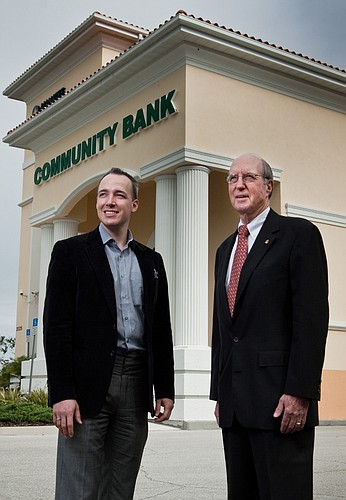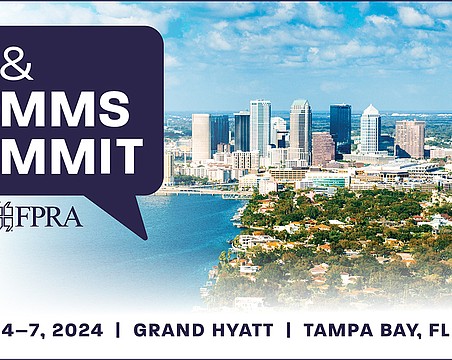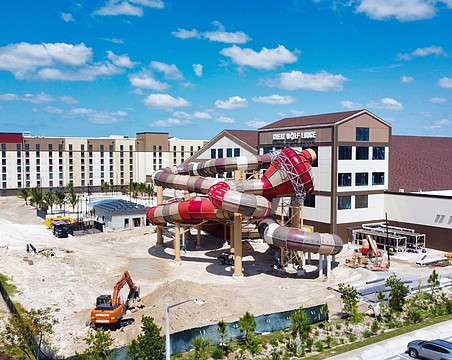Longtime Gulf Coast community banker Bill Sedgeman longingly recalls the days when an institution's return on assets was a metric he and his peers bragged about.
But even though Sedgeman has been a banker since 1971, the good ol' days of banks getting good returns on assets actually weren't too long ago. In fact, during the boom in the previous decade, many Gulf Coast community banks posted quarterly return on assets of at least 1.5%. That's the general figure banks nationwide strive for, though in the recession most bankers consider an ROA of 1% a victory.
If that's the case, Sedgeman, chairman and founder of Lakewood Ranch-based Community Bank & Co., again has something to brag about. That's because Community Bank had an ROA of .99% in the fourth quarter, according to Federal Deposit Insurance Corp. data. That was an increase of 1.49% over 2010, and the fourth-highest quarterly ROA among all 54 community banks on the Gulf Coast.
“For a bank that has come from where we were, that's amazing,” says Sedgeman. “It really shows what we can do.”
Community Bank, furthermore, is just one of many Gulf Coast community banks to report an ROA increase in the fourth quarter. Community, which recently announced it plans to change its name, to C1 Bank, was able to improve its ROA mostly because it cleaned up poorly performing assets, says Sedgeman. Other banks reported a similar reason for an improved return on assets.
The ROA measurement alone, of course, isn't proof of a bank's total recovery, and many banks still continue to struggle with profitability and asset growth.
But a bank's return on assets is one key indicator of how it compares against its peers. The metric is a bank's total net income divided by its average total assets.
Overall, in the fourth quarter, 26 of 54 Gulf Coast-based community banks had a positive ROA, according to a Business Review analysis of FDIC data. That's up from 22 local banks with a positive ROA in the 2010 fourth quarter, and 11 that were above zero in 2009.
Moreover, on an aggregate basis, the ROA for all 54 Gulf Coast community banks improved 61% year-over-year, from -86.08% last year to -25.11% in 2011.
Aggregate revenues for all banks also improved a slight 1.91%, from $890.44 million in the fourth quarter of 2010 to $907.47 million in the fourth quarter of 2011.
Some local banking executives and analysts attribute the ROA increase to the outflow of an improving economy. That helps to both pick up better-performing assets, and possibly, improve underperforming ones.
For example, Tampa-based Central Bank posted a 2.54% improvement in its ROA in 2011, going from -1.3% in 2010 to 1.24% in 2011 - the third-highest ROA on the Gulf Coast. Central Bank President and CEO David Paetzold says the bank, founded only a few years ago, doesn't have too many bad real estate loans.
But its ROA, Paetzold says, was nonetheless weighed down by the recession. The uptick in the economy has helped. “Now we are starting to make money on our margins,” says Paetzold.
Central Bank also sold some performing assets and changed its tax-filing structure over the past year, other factors that led to an ROA improvement.
Meanwhile, other banks that posted ROA improvements can trace the turnaround to specific decisions made on assets, or more pointedly, asset quality. For instance, Oldsmar-based Jefferson Bank of Florida Chairman and CEO Bob McGivney says his bank's ROA has been negative in prior quarters because of one nonperforming commercial loan worth $2 million. That's a big reason why the bank's ROA was -1.38% in the 2010 fourth quarter, says McGivney.
But Jefferson Bank wrote off the loan in the 2011 fourth quarter. “We bit the bullet on it,” McGivney says. “It wasn't any fun.”
The write-off boosted the bank's ROA to .41% in the fourth quarter.
The situation is similar at Fort Myers-based Preferred Community Bank. That bank's ROA was -.4% in the 2011 fourth quarter, a 1.54% improvement over its -1.94% ROA in the 2010 fourth quarter. Brenda O'Neil, Preferred's chairwoman and CEO, says the bank has been purging its underperforming assets for two years. “We have been very proactive in cleaning up our balance sheets,” says O'Neil. “It's short-term pain for long-term gain.”






